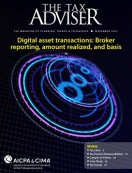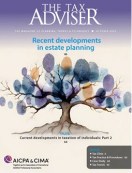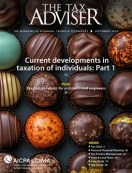- news
- PRACTICE & PROCEDURES
AICPA seeks IRS guidance on tip, overtime tax deductions for 2025
Related
IRS outlines details for Trump accounts
New regs. reshape 1% stock buyback tax, drop funding rule
Notice 2025-27 provides interim guidance on corporate AMT
The AICPA asked the IRS and Treasury to provide guidance on the reporting and substantiation requirements for deductions of qualified tips and overtime pay allowed under the sweeping new tax law, saying that taxpayers and tax professionals need clarification because the IRS has said it will not update certain forms for 2025.
The deductions are for tax years 2025 through 2028 under H.R. 1, P.L. 119-21, commonly known as the One Big Beautiful Bill Act.
In a letter dated Friday, the AICPA said that neither Form W-2, Wage and Tax Statement, nor Form 1099-NEC, Nonemployee Compensation, provides designated fields to report the amount of qualified tips and qualified overtime compensation or the occupation codes that the IRS has established for use in years beyond 2025.
This leaves employers and payers uncertain about how to meet the required information-reporting standards for the deductions, said Scott Klein, CPA, senior manager–Tax Policy & Advocacy for the AICPA.
“Additionally, tax return preparers and individuals preparing their own tax returns are unsure which type of alternative documentation they can rely on to support the deductions for qualified tips and qualified overtime compensation,” Klein said in a news release issued Tuesday.
AICPA recommendations
In its letter, the AICPA recommended that Treasury and the IRS:
- Provide guidance including a safe harbor for businesses for the 2025 tax year allowing for alternative methods of reporting and use of alternative documentation to report under Sec. 224(a) and Sec. 225(a).
- Include a safe harbor that permits individuals and tax return preparers to rely on the alternative information provided to determine the deductions, including box 7 of Form W-2; information provided by the employer or payer in any format (e.g., pay stubs or letters); or individual taxpayer representations of occupations, tip sheets, hours worked logs, and other documentation.
- Include examples in the guidance indicating the type of documentation that will satisfy the information-reporting safe harbors.
“The AICPA urges the IRS to accept our recommendations and provide this much-needed clarification,” Klein said.
— To comment on this article or to suggest an idea for another article, contact Martha Waggoner at Martha.Waggoner@aicpa-cima.com.














